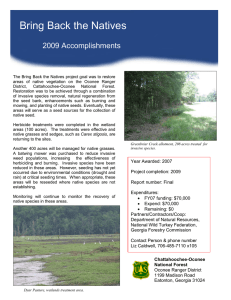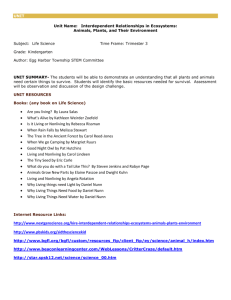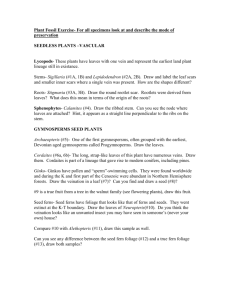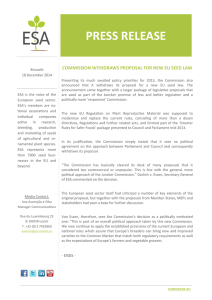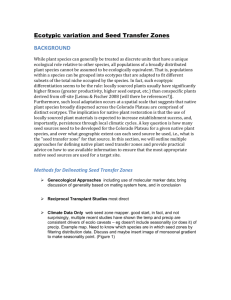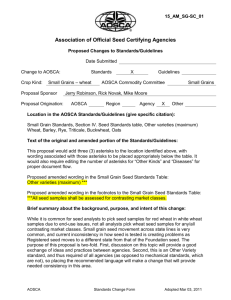Using an Ecological Approach to Managing Invasive Plants in the
advertisement
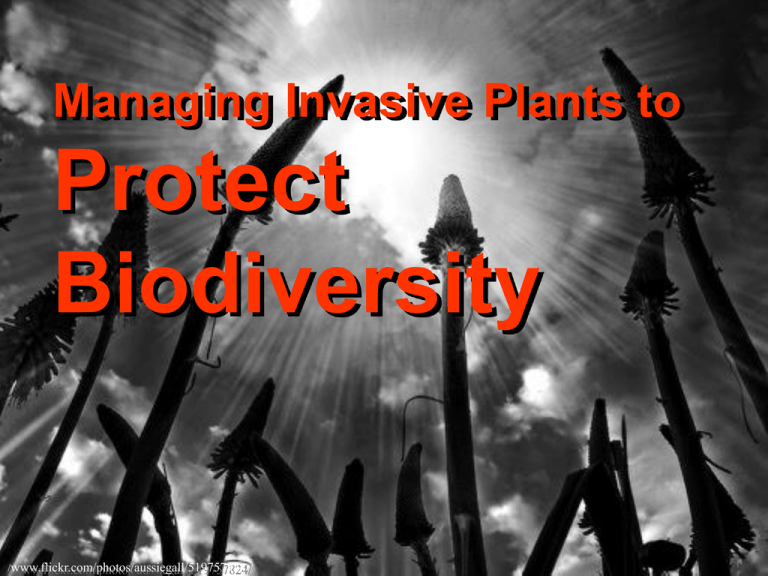
Managing Invasive Plants to Protect Biodiversity /www.flickr.com/photos/aussiegall/519757824/ Getting started • What species of non-native plants are already established? • Which interfere with achieving our goal for the site (e.g. preservation of biodiversity)? • What part does each plant play in the altered ecosystem? • Developing a strategy www.invasive.org/gist/products/plans/W eedTemp.pdf Site: unstable slope; exposed soil Species: reproduces largely from rootstock, also seed; dispersed by ejection (to 15ft); seeds can float; seed viable 5-8 years; extensive root system with large energy reserves (manual control ineffective) Leafy spurge isolated patch Context: bounded on south by extensive caragana thicket Management: Leave and monitor; do not remove caragana as preventing L. Spurge spread towards river; cut and remove flowers to deplete seed bank 5-8 yrs; check area for new colonies and remove by hand-pulling (only effective within first two years of establishment) Mapping the distribution and abundance of target species 2009 2010 2011 Weeding – control or eradication? Where to start? Tartarian honeysuckle survey shows prevalent in all ecosystems except willow Site: start control efforts in least affected ecosystem i.e. riverine Species: reproduces by seed; seeds germinate in spring (do not remain viable for long periods); seedlings establish in sparse vegetation, often under tall shrubs or trees; once established can tolerate deep shade; shallow rooted; sprouts vigorously if cut Management: actively search for young plants in appropriate habitat; remove shrubs <3 yrs by hand-pulling; cut older plants repeatedly June to Oct to deplete root reserves Volunteers’ abilities and interests vary When manual removal not possible/effective… plant energy reserves possible winter kill plant repeatedly cut back J F M A M J J A S O N D time of year Use of herbicide? Doing nothing…? Site: deep shade (under mature balsam poplars) example: isolated patch of Oxeye daisies Species: prefers sun but can tolerate partial shade; likes disturbed ground; reproduces by primarily by seed but also by rhizomes; flowers June-Aug; seed dispersed close to parent plant; most seeds germinate in spring; seed viable c.6 years management (?): patch is in a shady location – may die out on its own – monitor; prevent further disturbance of ground; cut flowering stems in June to prevent seed production; check around patch for new seedlings in spring and pull… for 6 yrs! example: alfalfa – survey shows widespread along trail edges Site: trail edges – disturbed ground (disturbed by mowing, erosion and compaction) Species: needs sun; prefers deep, well-drained, nearneutral soils; nitrogen fixer; very deep root system (39m) Management: leave, as not practical to prevent disturbance along trails; does not appear to be invading interior; may be preventing establishment of ‘worse’ invasive plants (out-competing and increasing soil fertility Working with the City (and its priorities…) Importance of monitoring Looking out for new invasive species • What to look out for - City list vs. site list • New to Alberta – EDDMapS www.eddmaps.org Keeping track… END Weaselhead/Glenmore Park Preservation Society acknowledges the support of Nature Calgary, the Alberta Stewardship Network, TD Friends of the Environment Fund, and the Alberta Conservation Association /www.flickr.com/photos/aussiegall/519757824/
